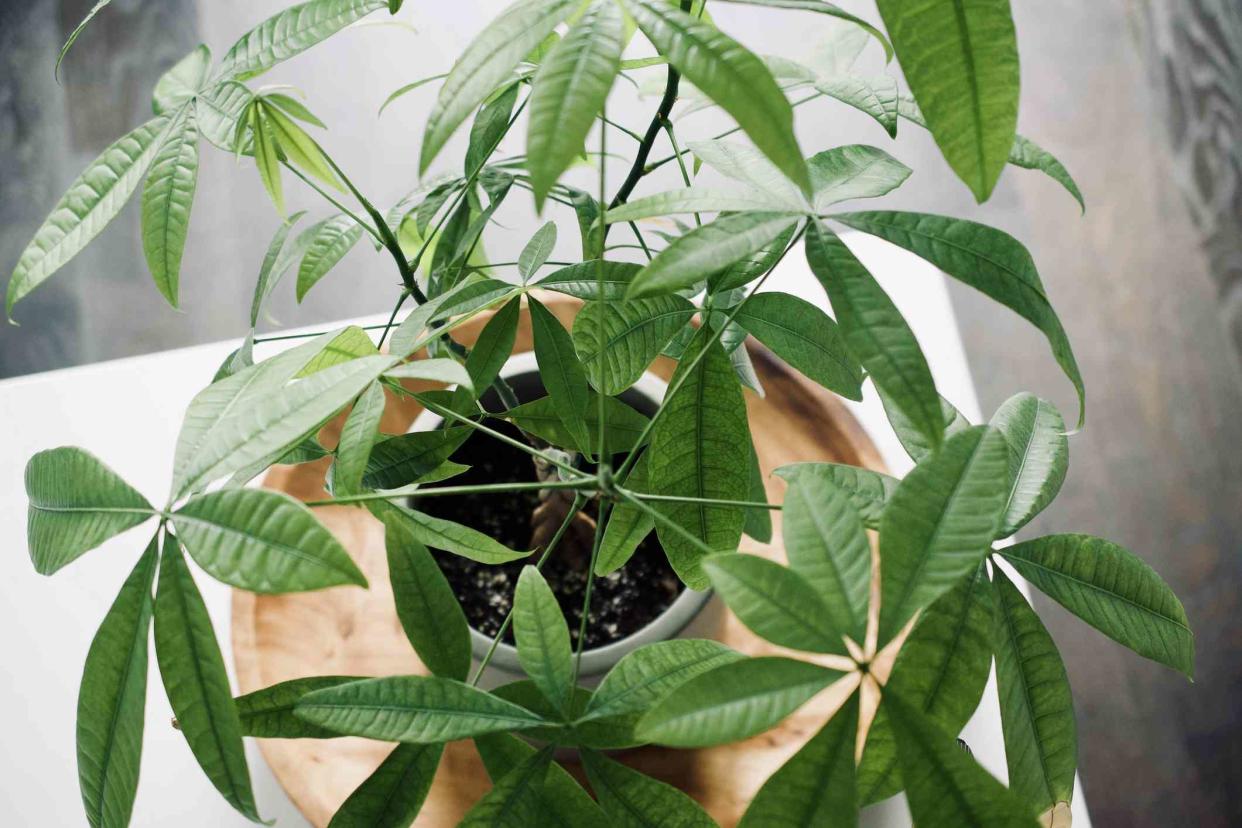How to Repot a Money Tree to Keep It Thriving and Happy

Getty Images/Michael Gollop
A money tree (Pachira aquatica), also known as the guinea chestnut, is a popular houseplant that is said to bring positive energy into the home, but to keep that energy flowing, it's necessary to repot the money tree as it grows. This easy-to-care-for plant is low maintenance day-to-day, but its roots need space to thrive. Because it does best in a well-drained environment, the minute its roots begin to feel cramped, it's time for a planter upgrade.
Want to make sure your money tree is happy in your home? Here's how to repot a money tree in six simple steps.
When to Repot a Money Tree
With their braided stems and elongated green leaves, money trees are as fast-growing as they are striking. They can add up to 24 inches of height in a single year, eventually topping out at six to eight feet tall. However, if you pick the right planter size, you should only need to repot your money tree every two years.
A money tree should be repotted every time its roots begin to outgrow the planter, but don't jump to repotting too soon—every time you repot the plant, that causes stress, which can damage the plant over time.
Repotting should only be done when it becomes absolutely necessary. You'll know it's time if the roots start poking out the bottom of the pot, there are signs of wilting leaves, or, in extreme cases, the roots crack the planter.
Ideally, a money tree should be repotted in spring or summer just as it is kicking into its active growing season. If you repot it during the fall or winter when its growth is dormant, it can miss out on taking in key nutrients.
Want more gardening tips? Sign up for our free gardening newsletter for our best-growing tips, troubleshooting hacks, and more!
How to Repot a Money Tree
When it's time to repot your money tree, follow these six steps to make sure you're giving your plant a happy new home.
Choose the right size of pot. Depending on the size of your money tree, choose a planter that is one to three inches larger than your current planter. If your tree is larger, lean towards the upper end of possible planters.
Water your money tree the night before repotting. The evening before you plan on repotting your money tree, water it generously. This helps prepare it for repotting as well as loosens the soil to make it easier to remove it from its current planter.
Prepare the new planter. Add fresh, well-draining, loamy soil to the planter, approximately one-third full. You can add a layer of gravels or pebbles beneath the soil if you want to add extra drainage.
Remove the money tree from its current planter. Carefully remove the money tree from its current planter, taking care not to damage the root ball. Tip it over slightly or run a garden trowel around the planter edge if you need help loosening it. If any roots appear mushy or rotted, remove them using a good pair of sharp pruners.
Plant the money tree in the new planter. Set the money tree in its new planter, and make sure it is upright within the planter. Fill in the pot with soil, leaving roughly an inch of space between the top of the soil and the top of the planter.
Water the money tree. Once the money tree is in the new planter, make sure you water it thoroughly to help it adjust to its new home.
How to Care for a Money Tree After Repotting
After you've repotted a money tree and watered it adequately, first move it back to its location with bright, indirect light. Then, make sure the water successfully drains since overwatering is one of the money tree's biggest enemies.
Frequently Asked Questions
What kind of soil does a money tree need?
A money tree will thrive in a loamy, sandy potting mix that is well-draining. A peat base will also help drainage. Make sure it has an acidic to neutral pH.
Does money tree like to be root bound?
A money tree does not like to be root bound since that can impact drainage and lead to root rot. It also can affect the money tree's ability to get nutrients from the soil when the roots are too tightly bound.
What does an overwatered money tree look like?
The leaves on an overwatered money tree will begin to wilt and yellow, eventually leading to browning on the tips of the leaves.
Read the original article on The Spruce.

